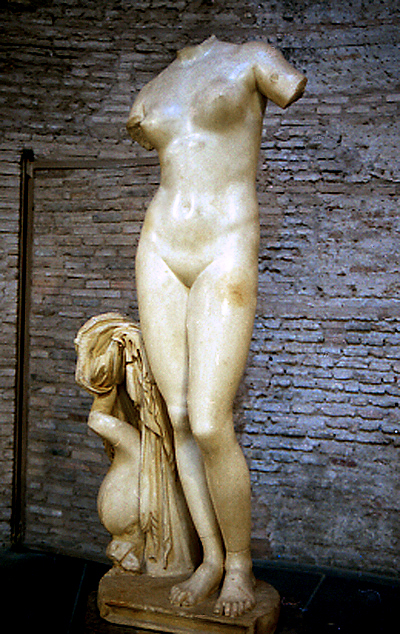

Once famous for the production of silphium, the ancient Greek colony of Cyrene had been founded in 631 BC by settlers from the nearby island of Thera, who had been compelled to emigrate there by the Pythia, the priestess of Apollo at Delphi (Herodotus, IV.150ff). By 1912, the region had been wrested from the Ottoman Turks and become a colony of Italy. The Venus of Cyrene was discovered late the next year, when torrential rains washed away the topsoil at Trajan's Baths in the Sanctuary of Apollo, revealing the statue, which soon was transported to Rome.
A Roman copy of a Hellenistic original, it has been characterized as Aphrodite rising from the sea (Anadyomene), a popular type that—with the arms held away from the body so the hands can wring water from the hair—allowed the body to be displayed. (The Diadumenos is another figural type, in which the arms are raised to tie a fillet around the head.)
This picture was taken in 1997, when the statue still was in the Octagonal Hall of the Baths of Diocletian (Museo delle Terme). It remained there until 2008, when, following a ruling by an Italian court, the statue was returned to Libya.
References: "The Aphrodite from Cyrene" (1920) by Ernest A. Gardner, The Journal of Hellenic Studies, 40(Pt 2), 203-205; "Hellenistic Sculpture from Cyrene" (1921) by Gilbert Bagnani, The Journal of Hellenic Studies, 41(Pt 2), 232-246.
![]()